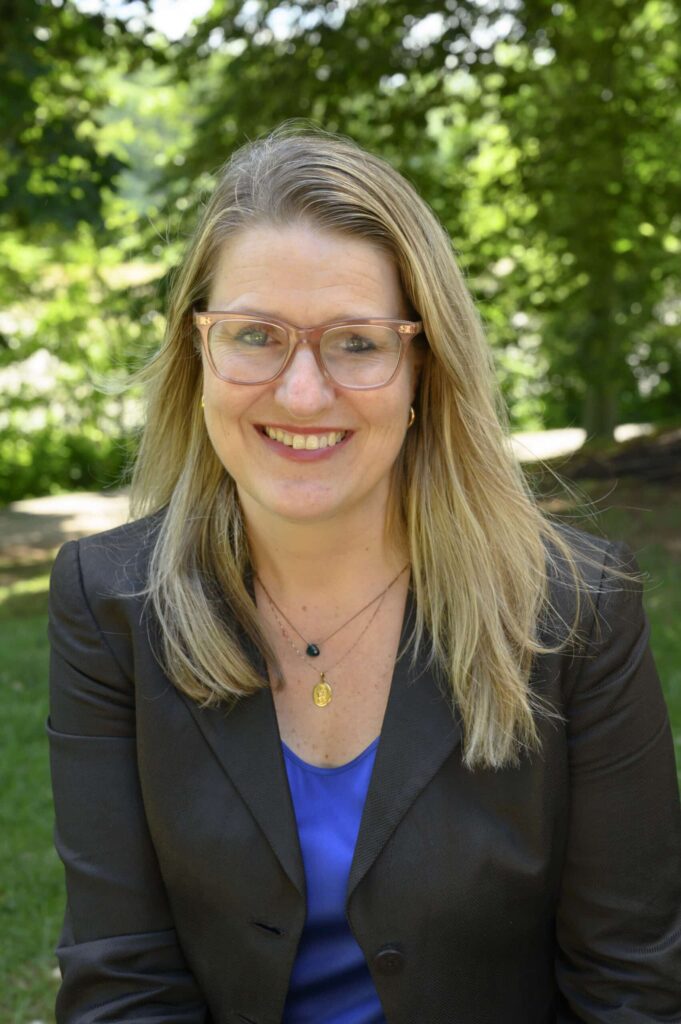Breaking Ground
Doctor Megan Sandel, Boston Medical Center

By Jessica Hoefer
10 min read
🔉 Editor’s Note: You can enjoy a recording of this discussion here.
At National Housing & Rehabilitation Association’s 2024 Fall Developers Forum in Boston, Dr. Megan Sandel from Boston Medical Center spoke with Peter Bell, president and CEO of NH&RA, in a presentation titled “The Intersection of Housing & Healthcare: Insights That Might Be Beneficial to Developers & Owners.”
Their conversation examined the connection between affordable housing and healthcare and the growing realization that good health is essential for households to attain stability and sustainability.

Dr. Sandel is a pediatrician and co-director of the Grow Clinic at Boston Medical Center (BMC) and a professor at the Boston University Chobanian & Avedisian School of Medicine and the Boston University School of Public Health. Additionally, Dr. Sandel is the founder of the Housing Initiative and serves as a board member of Enterprise Community Health Community Partners, where she assists them with housing policy. After earning her medical degree, Dr. Sandel completed her pediatrics residency at Boston Children’s Hospital/BMC. She previously held the position of pediatric medical director at Boston Healthcare for the Homeless and was the first medical director of Medical-Legal Partnership-Boston. Passionate about addressing critical issues affecting the most marginalized populations, Dr. Sandel is regarded as an expert in the fields of housing and child health.
This interview has been edited for clarity and length.
Peter Bell: Increasingly, affordable housing developers are being asked, or in some cases required by allocation plans or other public funding, to take in formerly homeless and other special needs populations. The challenges are, how do we manage those? How do we get the services? How are they funded? What are supportive housing partnerships? How do those work? Can you give any examples of those?
Dr. Megan Sandel: There’s this idea that we’re spending a lot of money on shelter—and not getting great outcomes. So, wouldn’t it be better to shift those dollars toward supportive housing and get better results?
What we’ve learned is that if you have a severe chronic illness and you’re homeless or housing unstable, your healthcare costs go way up. And when you layer that with serious mental illness or substance use disorder, it gets astronomical.
We’ve tried implementing a lot of case management, but if you can’t find the patient, case management just doesn’t work.
At BMC, we’re increasingly seeing that partnering on supportive housing makes sense. We’ve been working closely with housing authorities, such as the Boston and Cambridge Housing Authorities.
Especially with Section 811 or other vouchers, there’s a real opportunity to speed up development by being the onsite homeless service provider in those buildings.
PB: Can you help us understand the distinction between the different entities? When we talk about hospitals, hospital systems, health plans, and health planning systems, what is the difference between them, or are they all potential partners for the development community?
MS: They’re all potential partners but have different financial incentives. And you’re all about making deals or understanding them, right? So, you need to understand your incentives under the Affordable Care Act, which was passed about ten years ago.
For hospitals, it was a huge shift. We used to essentially set the market in terms of what services cost. Then, suddenly, we were pushed into what is basically capitation. We don’t use that term much anymore, but that’s what it is – a fixed amount of money is available, and we must operate within it. And the ones who came out ahead in that shift? The health plans.
The power moved from hospitals to health plans. They started setting the market, defining the expectations, and even the quality metrics. That’s why the best place to start is by talking to the folks doing both – those who handle both the delivery of care and the payment side.
If you get stuck with a mostly high-cost risk pool, high-need patients, you’re not just going to fail to make money – you’ll lose money. And our healthcare system is very uneven. At BMC, a safety-net hospital, we disproportionately care for low-income people. That means we often don’t get paid the same rate.
Now, I know many of you want to set up on-site healthcare services in your buildings, and honestly, that’s a great idea. It makes sense. But here’s the challenge: Who’s the patient? Or, in health plan terms, who’s the member?
To make the math work, you need enough of those members concentrated in one place. I’m a strong fair housing advocate. I absolutely believe in access. But it does create tension when we’re trying to figure out how to build mutually beneficial incentives.
You’re thinking in 15- to 20-year time horizons, but hospitals? We barely do budgets one year at a time. So, how do we align those timelines? How do we create incentives that make sense for both sides?
Advertisement
PB: If a housing organization is interested in approaching a healthcare provider to see how they can partner, who do you contact?
MS: Hospitals are big, and they’ve got a lot of different entry points. Typically, the folks working in clinical settings—maybe someone in case management, a social worker in a clinic, or even the head of a clinical service—can be great points of contact. But they’re not usually the decision-makers.
If you’re trying to reach people who make decisions about clinical services, you’re looking for the chief medical officer or chief nursing officer – someone responsible for the organization’s clinical direction.
If you think clinically, the chief population health officer is key. That person is focused on managing that pool of patients and keeping them well.
There are two other roles you should know about. One is the person in charge of community health or community benefits. They might help you get to the chief medical officer, chief nursing officer, or chief population health officer.
The second is on the finance side, the chief financial officer or chief investment officer.
There are three buckets of people worth knowing – clinical, community, and finance. Any one of them could be your entry point. They may not all know each other but if you can figure out where you want to start, and then work across the silos once you’re in, that’s a smart way to go.
PB: I’ve had conversations with developers looking to build these kinds of partnerships, and they’re trying to figure out which institutions they should work with. One idea was to survey the residents to determine whether they have insurance and which providers they use.
But there’s a real reluctance to do that because it raises privacy concerns and compliance issues.
What’s a workaround? How can you figure out which hospital systems or healthcare networks are serving the residents in your community without triggering all of that?
MS: Great question. We’ve tried a couple of workarounds at BMC. One is that most housing addresses aren’t covered under HIPAA—the Health Insurance Portability and Accountability Act—so they aren’t protected information. And often, especially if you’re doing a tax credit deal or something similar, that address data is already public.
We’ve asked, “Can you send us the addresses of the buildings you’re considering, or where you think there’s a service need?” Then we can plug those addresses into our system to see how many people in our health system are tied to them. That helps us get at the concentration question.
Another option is to make the data collection voluntary. Create a simple link and say, “Hey, we’re exploring a health and housing partnership and asking residents where they currently get their care.” Framing it that way—as something you’re doing to help the community—makes it feel a lot less like Big Brother.
PB: Following up on the Medicare and Medicaid topic, what services could be delivered within an affordable housing community or by a provider that will be eligible for Medicare or Medicaid?
MS: I’m a fan of this model. About a decade ago, something called SASH – Supports and Services at Home was tested. It was piloted in Vermont with a Medicare population, specifically elderly and disabled residents. In this mythical 100-unit building, they had a full-time community health worker and a part-time nurse. It was evaluated rigorously, showing that it helped reduce Medicare costs over time.
In Massachusetts, we have a program called Community Support Services for homeless individuals (CSP-HI). It’s a per-member, per-month (PMPM) fee structure. If you show a certain amount of service delivered each month, you can bill for that PMPM fee and build a scalable program.
PB: And how about delivering services remotely through telehealth or mobile? What kinds of things are you seeing that might be useful for the housing community?
MS: Telehealth is here to stay. Some developers asked me if they should put a dedicated telehealth room in their buildings. In my opinion, no. It’s a better investment to make sure your building is Wi-Fi-enabled. If you’ve got that, all you need is an iPad or a phone, and residents can do telehealth in the privacy of their units.
The bigger issue is about the residents’ ability to actually access and use telehealth.
Some great programs, like Tech Goes Home, offer digital literacy courses to help people become comfortable with technology. That could be an investment.
PB: If the housing industry wants to engage with the healthcare community in partnership discussions, what organizations should it contact?
MS: Again, we have our trade groups. On the hospital side, the biggest would be the American Hospital Association. It’s huge and might not be the best place to start, but they have smaller groups focused on housing and health, which can be a good way to connect.
If you’re leaning toward the supportive housing space, there’s a group called America’s Essential Hospitals. It’s made up of both public and private hospitals that disproportionately serve low-income populations. It’s an interesting group to get into.
On the insurance side, the Association of Health Insurance Plans (AHIP) is a good place to start. But another interesting group is the Medicaid Medical Directors’ Association.
It’s about relationship building. Relationships, relationships, relationships.
